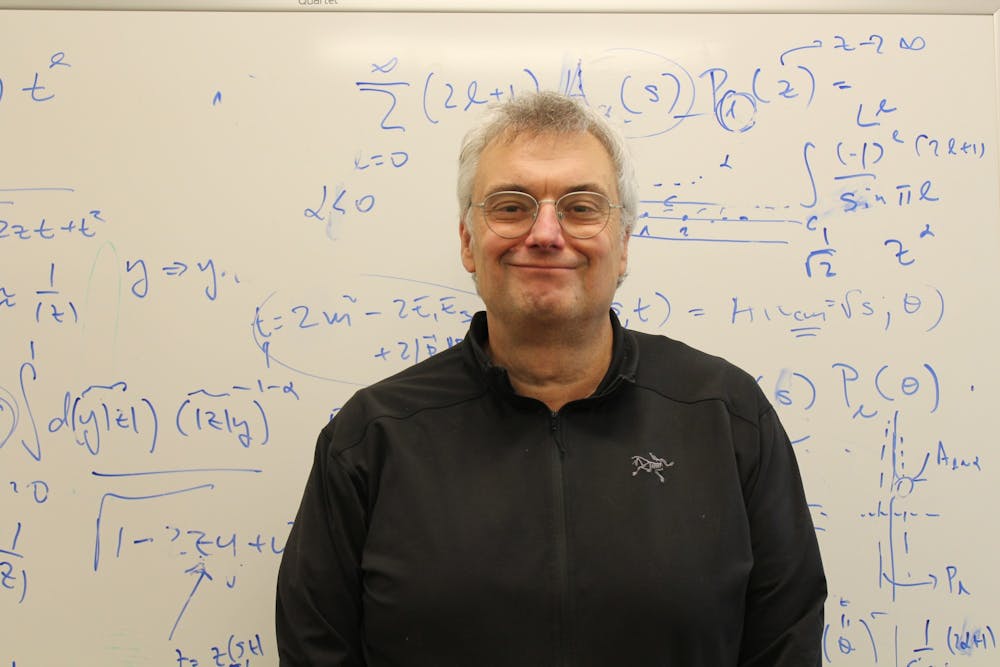ExoHad, a research project led by IU professor Adam Szczepaniak, has been awarded $1.8 million as part of an $11.24 million initiative funded by the U.S. Department of Energy.
Most visible matter in the universe is made of atoms, which are made of a central nucleus made of protons and neutrons, and electrons that orbit them. Protons and neutrons are part of a group of particles known as hadrons, Szczepaniak said.
However, it goes further, IU physics professor Sabine Lammers said, with everyday hadrons like protons and neutrons being made of even smaller particles called quarks and gluons. Quarks usually combine in pairs or triplets, to form stable hadrons. Gluons bind these quarks together, preventing them from flying apart, Lammers said.
[Related: IU Professor provides insight into evolution of stars]
ExoHad will be researching the properties of hadrons with abnormal combinations of quarks and gluons, to better understand their properties through observation under abnormal conditions. Szczepaniak said he is specifically interested in hybrid hadrons, which contain very unique structures of quarks and gluons, which makes experimentation easier.
Through experimentation, ExoHad aims to confirm the existence of gluons and come to understand their properties better.
“Gluons are of fundamental importance because it is ultimately gluons that build matter,” Szczepaniak said.
However, exotic hadrons are incredibly difficult to observe. Szczepaniak said exotic hadrons are not able to be observed directly and last for very small lengths of time, about a septillionth of a second.
“They aren’t exactly something you can take a picture of,” Szczepaniak said. “The type of particles that we are looking at decay almost instantaneously.”
[Related: IU professor included in list of authors cut from AP African American Studies course]
ExoHad will experiment on exotic hadrons by shooting a beam of light into the nuclei. Light, made of wave particles called photons, will interact with the targeted nuclei and will excise gluons, Szczepaniak said.
Szczepaniak said by detecting what type of hadrons they decay into, and tracing their paths and angles of distribution, his team will be able to determine the structures of the exotic hadrons they came from.
“If we know what kind of structures gluons combine into, we get a better understanding of how they interact in the first place,” Szczepaniak said. “Hopefully that will ultimately tell us how they generate matter.”
Keith Hermanek, an IU graduate student studying high-energy particle physics, said by studying the properties of subatomic particles, physicists will gain a greater understanding of the physical universe.
“It turns out that many areas of physics are related,” Hermanek said. “Understanding how something works on one fundamental level helps shed light on other fields, and ultimately how the universe works.”




